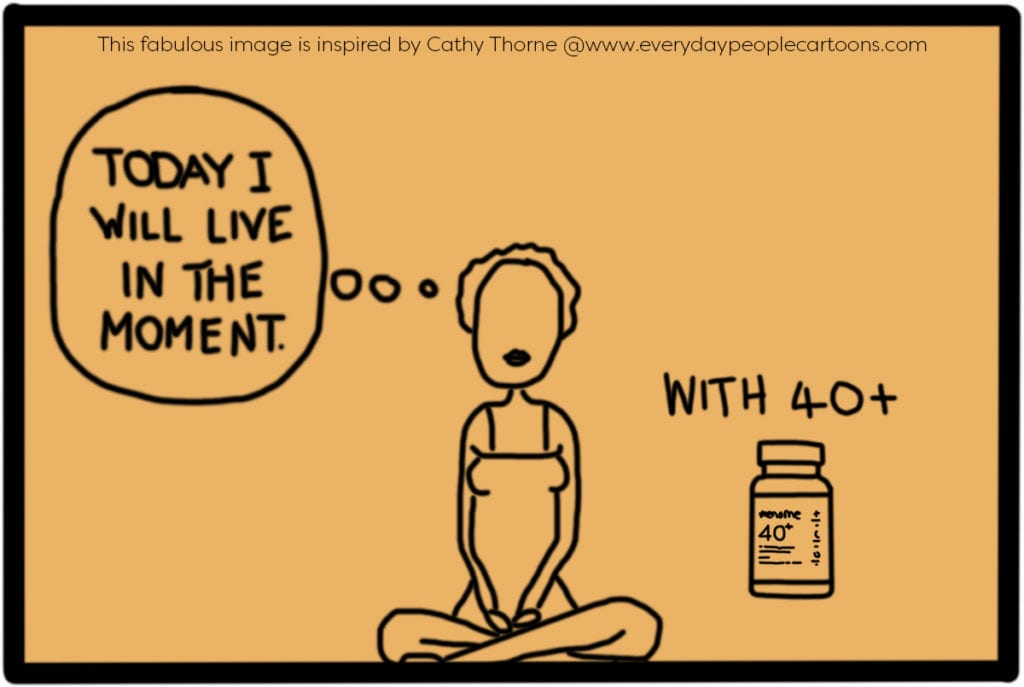Science Says: Mindfulness Aids Menopausal Signs

Mindfulness.
Have you noticed it’s a bit of a buzzword at the moment, right up there with meditation and ommmm-ing?
While I have to confess to being a bit of a holistic, spiritual dabbler, I actually had to look up the definition of mindfulness to really understand it.
The funny thing is, it’s so simple. A no-brainer in fact, but it’s something the majority of us forget to do.
What Is Mindfulness?
Being present in the moment.
That’s it. No magic potion or crazy technique. It’s just an awareness of self.
Mindfulness is so relaxing it’s proven to help reduce stress and anxiety and it’s been given an even higher profile by well-known fans like Nicole Kidman and Oprah Winfrey.
New Research From The Mayo Clinic
Now, science has now proven this practice can also help reduce the signs of menopause – especially perimenopause – such as hot flushes and mood swings.
A study by the Mayo Clinic in January 2019, asked nearly 1750 women aged 40 to 65 over two years (2015/2016), about their menopausal signs, stress levels and mindfulness.
The results showed that those who practised mindfulness experienced less irritability, depression and anxiety.
“These findings suggest that mindfulness may be a promising tool to help women reduce menopausal signs and overall stress,” said the study’s author, Dr Richa Sood.
The Art Of Mindfulness:
- Take your mind off autopilot and give yourself permission to let go of all the stress, worry and information running around in your head.
- Simply stay connected to the present moment, without judgement.
- Enjoy the calm.
- You can practice mindfulness anywhere: sitting down, walking, while you’re driving, eating breakfast, doing the ironing, brushing your teeth.






